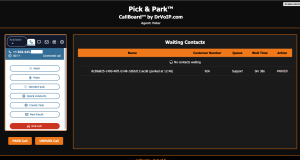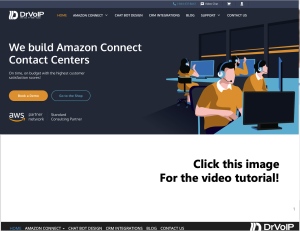Ever feel like your website and call center are two ships passing in the night? One’s all flashy and interactive, the other’s stuck in a queue playing elevator music. Well, buckle up, because integrating them with Amazon Connect is like giving them a matchmaking app – sparks fly, efficiency soars, and your customers? They’re the ones getting the happy ending!
The Perks of Playing Matchmaker
Picture this: A customer lands on your site, browses your killer products, but hits a snag. Instead of rage-quitting to a competitor, they click a chat button and – poof! – instant help. No more “hold please” nightmares. With Amazon Connect, you get:
- Seamless Chat Integration: Start with text-based chit-chat right on your site. It’s like whispering sweet nothings to your customers without the awkward small talk.
- Escalation Shenanigans: Chat not cutting it? Escalate to voice, video, or even desktop sharing. Imagine screen-sharing a troubleshooting session – it’s like having a virtual IT genie pop out of your browser!
- AI-Powered Wit: Our AWS Lex bots handle the basics, answering product queries with the charm of a stand-up comedian. “What’s the warranty on that widget?” Boom, answered faster than you can say “human agent.” Only escalate when things get real – saving time, money, and sanity.
The benefits? Happier customers who feel heard (literally), lower abandonment rates, and agents freed up for the tough stuff. It’s not just integration; it’s a full-on bromance between digital and human touchpoints.
How DrVoIP Makes the Magic Happen
At DrVoIP, we’re the wizards behind Amazon Connect deployments. We weave in AWS AI to make your Lex bot smarter than your average bear – or at least smarter than that one uncle who thinks he’s tech-savvy. From chat to video escalation, we ensure your setup is as smooth as a well-oiled meme machine. No more siloed systems; everything chats, calls, and collaborates like they’re at a family reunion (minus the drama).
Wrap It Up: Don’t Leave Your Site Hanging
Integrating your website with your call center via Amazon Connect isn’t just smart – it’s hilarious how much easier life gets. Customers get help without the hassle, your team avoids burnout, and your bottom line? It does a happy dance. Ready to play cupid? Demo by clicking the chat icon below or Hit us up at DrVoIP.com – we’ll connect the dots (and the calls)!


